Google Chromecast Review - An Awesome $35 HDMI Dongle
by Brian Klug on July 29, 2013 9:45 PM EST- Posted in
- Smartphones
- Media Player
- Android
- Mobile
- HDMI
- Chrome
- Tablets
- Chromecast
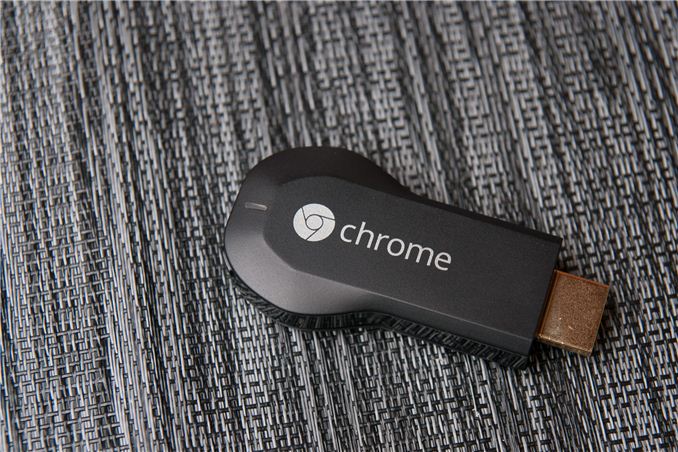
So I have a confession to make – I didn’t hate the Nexus Q. While I didn’t necessarily love it and use it daily like a small minority of my peers did, I also didn’t immediately declare the product an unmitigated disaster like the vast majority of people. The fate of that product was so quickly decided that I hadn’t even begun writing my review when the whole thing was terminated. When I spoke with Googlers about Nexus Q, what was obvious to me was that the Q had begun as an audio-only product that later on had HDMI added, and that tiny bit of context made all the difference in understanding the choices behind it. I left the Nexus Q plugged into my AV Receiver up until the most recent set of Google Play apps killed functionality entirely.
Ultimately the price of the Nexus Q was its undoing ($299), not necessarily its functionality or even its somewhat awkward spherical form factor. The concept was relatively sound – a network-attached appliance that played back movies and music from Google’s servers directly, rather than streaming them from device to device on the same network. The Q ran Android 4.x atop an OMAP4460, literally the same platform as the then-flagship Galaxy Nexus, just sans cellular connectivity, which made it a logical choice.
The Nexus Q was killed off before other services could be added, but at a high level the Q’s functionality as a playback device rather than streaming endpoint carried onto its successor, the Chromecast.
The Chromecast is obviously everything the Q should’ve been. It’s a simple, small, $35 HDMI dongle, powered by USB, that’s designed to discreetly plug into the back of a TV. There’s been much talk about the power requirement of the Chromecast, USB is indeed required for operation, but just about every modern TV has USB ports on the side for attaching mass storage or powering accessories like this. In fact, the Chromecast’s form factor is already a popular one for Android-powered HDMI dongles and Miracast sinks, as well as a variety of other small appliances. I’ve confirmed with Google that MHL-HDMI is not in fact supported by the Chromecast, meaning it can’t be powered by a TV that includes the spec (which can deliver up to 500 mA at 5 V), straight HDMI can only supply 50 mA at 5V. I’ve yet to encounter a TV with MHL-HDMI myself, including on the 55-inch LCD TV I purchased just 3 months ago.
Inside the box for the Chromecast is the device itself, a relatively long microUSB cable, USB power supply, and HDMI extender. Funnily enough the USB power supply appears to be the exact same as the previous generation Motorola USB charger (5V, 850 mA), just with a different exterior – is this the first Motorola product out of Google proper?
The HDMI extender cable helps get the Chromecast behind a TV if you need to turn it 90 degrees or have an inset port with inadequate clearance like I do on my front-facing HDMI accessory port.
There’s not much to talk about regarding aesthetics of the Chromecast itself, it’s a dongle with a rounded bulge at one end, and HDMI port at the other. There’s a reset button on the side, microUSB port for power, and a status LED on top. On the bottom are regulatory markings. My only complaint about the Chromecast’s design is this status LED, which inexplicably is bright solid white whenever the device is on, making it distracting in a dark living room or bedroom. Nothing electrical tape can’t solve, but an inexplicably poor choice for a media center playback device given that bright LEDs are a known no-no.
The hardware is what it needs to be – small, simple, and conducive to the low price point. The Nexus Q was a solid bowling ball in comparison, primarily thanks to the analog audio amplifier and hardware it really didn’t need. By keeping unnecessary I/O to a minimum the Chromecast ends up being a nice and small streaming appliance.


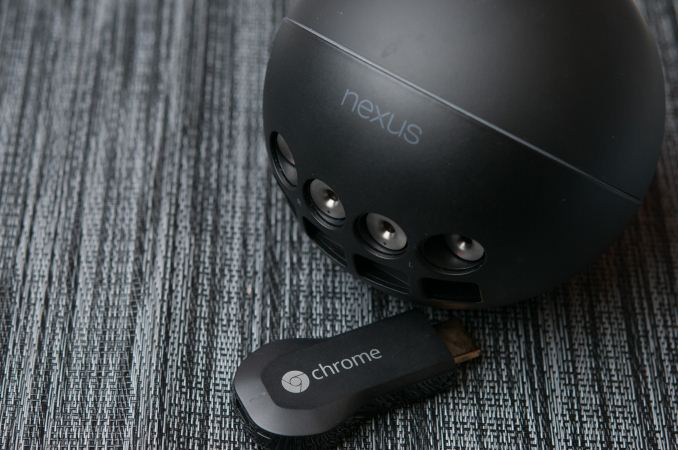
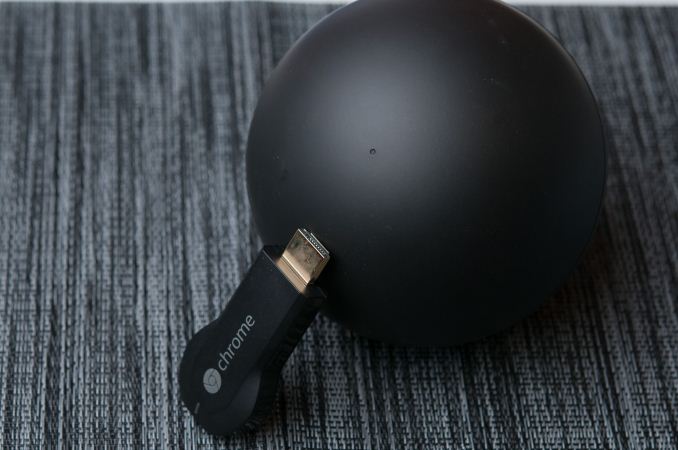

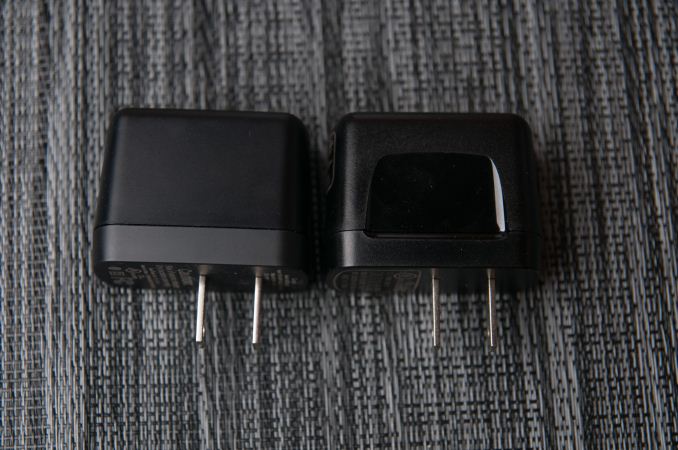






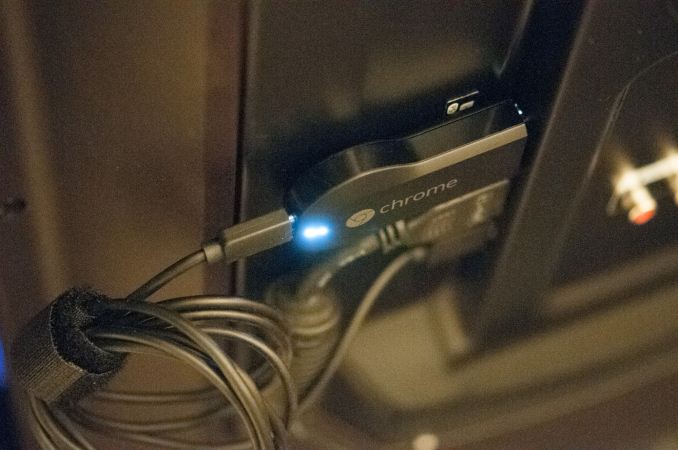








105 Comments
View All Comments
jjj - Tuesday, July 30, 2013 - link
This is exciting because it's open and easy for devs to add the functionality while users don't have to wait on Google or install apps on the device to gain functionality. Many more things to say about it but won't do that now, except that i hope they won't censor content and it's a pity they released it when it still looks at best like a beta.Things like local media playback not just tabs, phone to phone , more apps supporting it (including some other Google services like Docs) would have been nice to have at launch.Google managed to keep it simple and it's cheap but it's in beta and it's not easy to explain what the thing is to the consumer and they haven't found a great way to do so. Nice to see that Google pulled a Google in a time when they seem to have lost it and it has a strong chance of taking off fast. Now if they would also get rid of that huge "NSA Inside" label on the box....
darwinosx - Tuesday, July 30, 2013 - link
It's Google TV code not android. Yet another thing not mentioned in this review.savagemike - Tuesday, July 30, 2013 - link
It's hard to get rid of a label born of pure accusation. Leaving aside that they have disclaimed the accusation the problem at hand is this. Whatever Google has or has not done - what you are asking them to do now is to get people like yourself to stop saying they have done it. And they have no way to do that.bleached - Tuesday, August 20, 2013 - link
Third party apps are already playing content through drop box, Google Drive, etc.CommandoCATS - Tuesday, July 30, 2013 - link
Heh, funny you should note that the Chromecast might be the first Motorola/Google product, since ironically it doesn't work correctly with any of the Motorola OMAP4/Jellybean 4.1 devices (Bionic/RAZR/MAXX/Droid 4).https://forums.motorola.com/posts/8a641ae938
Brian Klug - Tuesday, July 30, 2013 - link
Weird, even after getting the Play Store updates?-Brian
CommandoCATS - Tuesday, July 30, 2013 - link
Yup, it seems to be something with the WIFI implementation on those phones. It will sometimes find the device, but be unable to complete the setup (fails after entering AP information). I was able to complete setup just fine with a laptop, and then it will mostly work, but the Chromecast app still doesn't think it's set up. Apparently some features will still be missing, but I haven't explored it fully yet.CommandoCATS - Tuesday, July 30, 2013 - link
Also, apparently Play Music will not work (from the Motorola device) when it is configured in this manner (from another device).Brian Klug - Tuesday, July 30, 2013 - link
Wow, that's weird, I'll have to see if I can find my Droid 4 or something, that's bad news.-Brian
darwinosx - Tuesday, July 30, 2013 - link
A video streaming device that doesn't do 5 ghz? That makes no sense.Roku does much more and the Chromecast isn't all that small when you add the HDMI cable and power supply. Which Google went out of their way to pretend didn't exist.
This review was really too uncritical of the shortcomings of this device.